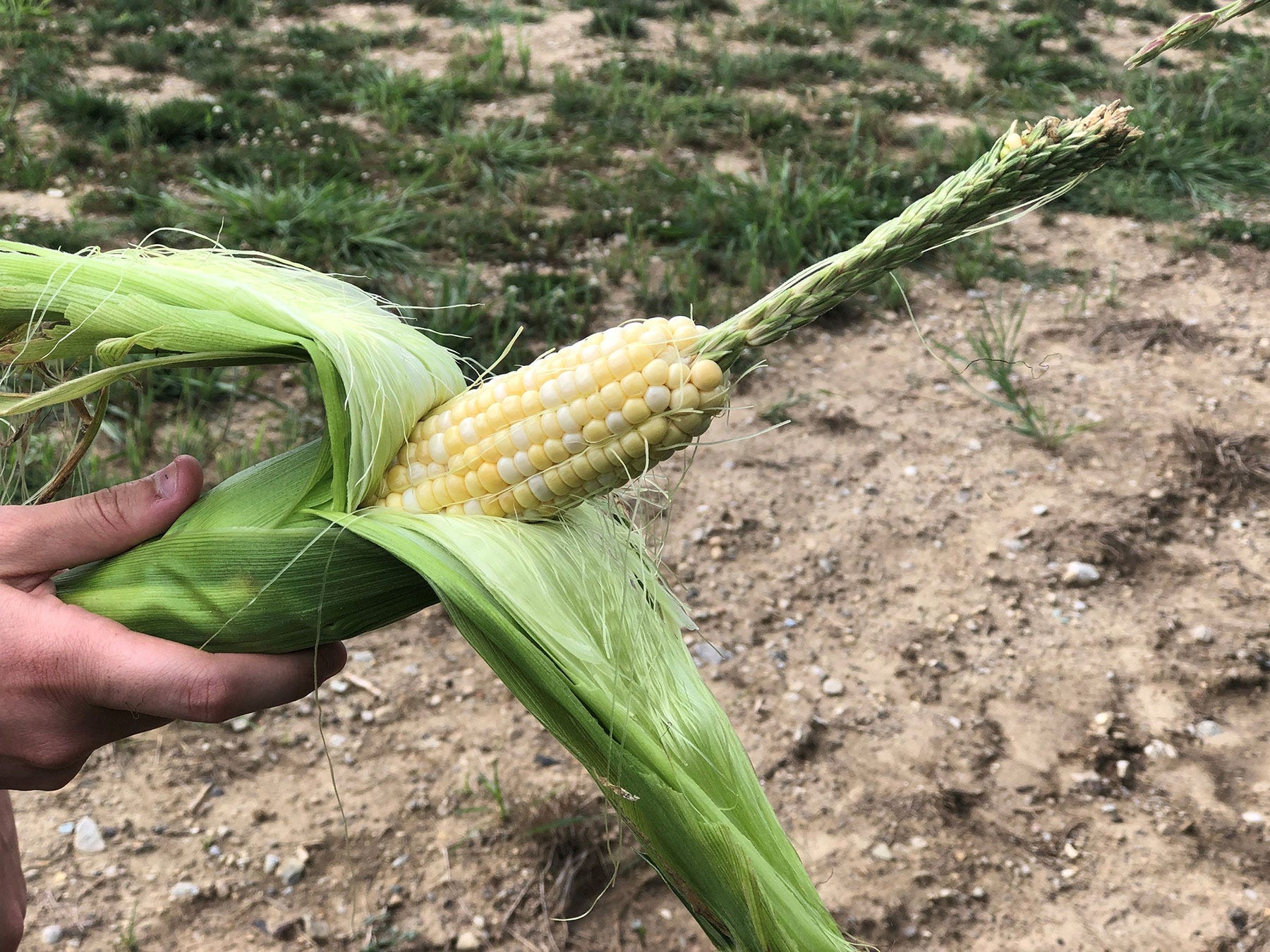
Odd-shaped ears are not new. The Farm Progress story that appeared earlier this summer featured 13 unusual shapes, with possible explanations. Osler Ortez, Extension corn specialist at Ohio State University, did research on the “why” of odd-shaped ears at the University of Nebraska, before assuming his role at OSU. Meanwhile, Dan Quinn, the Purdue Extension corn specialist who took over for longtime agronomist Bob Nielsen, is also experienced in identifying odd-shaped ears.
Mother Nature struck again in 2023. Check out three different shapes found in a single 1-acre field of sweet corn. It was a productive field, but it was planted around May 20 in central Indiana, so it endured drought before rains returned in early July.
These abnormalities consist of a barbell-shaped ear; an ear that might have been barbell-shaped, although kernels stayed intact on the back side; and an ear with a long tassel protruding from its tip.
“We don’t know for sure what causes these abnormalities, but there are theories,” Quinn says. “And this isn’t the only report we’ve had this year. I’ve fielded calls from farmers, and specialists in Ohio have seen it too, especially in sweet corn.”
Explanation for barbell ear
So, what’s the best theory? “Barbell ears are likely due to either arrested or failed ovule formation of potential kernels during the later stages of ear size development,” Quinn says. “Ear size development occurs from growth stage V6 and continues until shortly before tassel. The location of the missing kernels or tassel-like portion in the ear can help indicate exactly when the stress occurred during ear development.
“Potential stress that can cause these symptoms includes low temperatures, shading, ethylene production and/or other plant hormones. Much of why it happens is still difficult to determine. However, it’s possible stress caused by drought when ears were developing was a factor this year as well.”

BARBELL VARIATION: Note the tassel tucked inside the ear, which is open on one side but has no break in kernels on the other side of the ear.
In typical barbell ears, often the area between the large and shorter second portions of ear are connected by a slender cob. In the ears pictured here, it’s a tassel-like structure connecting the two parts.
“Both male and female inflorescences in corn have latent floral structures for both sexes,” Quinn explains. “Normally, hormonal regulation takes over and they appear to be unisex.
“The point is that the flowers of corn have both sexes. That’s why when something goes awry, you can get tassel material within or on ears, or ears or barren cobs coming out where the tassel should be.”

EAR WITH TASSEL: Yes, that is a tassel growing out of the ear. As it turns out, finding a tassel-like structure at the tip of the ear isn’t so unusual. Finding one this long is rare.
Seen any unusual ear shapes? If you find some this fall, snap a picture, and let Quinn know. He’s interested is continuing to learn about conditions that cause these abnormalities. Email him at [email protected].
About the Author(s)
You May Also Like




